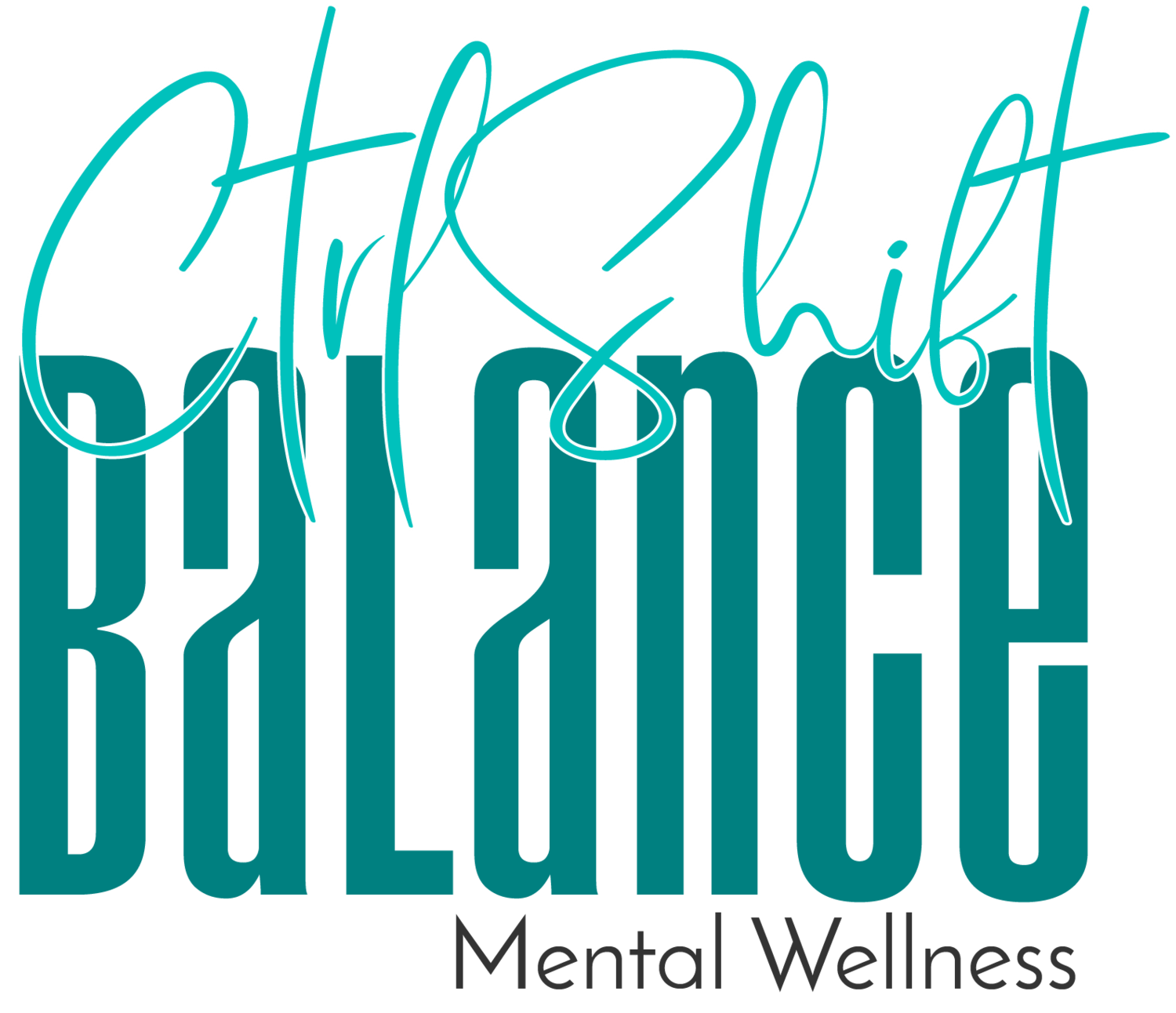
Ctrl Shift Resilience
Last Sunday, I got a chance to be a panelist with 5 other accomplished professionals with Queen of Resilience SIP and SPEAK 2021. Can you image what theme focused on….RESILIENCE. It was amazing to hear several stories on how both men and women made a pivot during this era. Whew chile, 2020 was year of redefining what BALANCE looked liked. With increasing demands of work, becoming a home school parent, cancelling travel plans and moving to new state, there were days that were a struggle to say the least. I’ve learned that although it has been a struggle, it how we react to the struggle that matters. I want to share with you that it is possible to change the way that you reactive to negative circumstances.
Resilience is that amazing skill that helps you recover quickly from difficulties. If you are resilient, then when life knocks you down, you bounce back and you keep going. Sometimes life's challenges can even make you stronger.
So how do you become a more resilient person?
1. Reframe Your Catastrophic thinking
Catastrophic thinking is when we expect the worst possible outcome in a situation. For example, you may have lost your job and now believe that you will never be successful, and everyone will think you’re a failure forever. This may sound extreme. Most of us don’t catastrophize quite this much, but many of us do sometimes believe that the worst possible outcomes will come true. Although being aware of possible negative outcomes can be helpful for planning ahead, when we believe the worst will come true, we set ourselves up for unnecessary stress and poor resilience.
One way to break this thought pattern is to wear a pendant or carry a stone or other small object with you. Every time you find yourself imaging the worst — about a person, situation, or outcome — analyze the object. Name it’s color, shape, and details. This is just the right amount of distraction to help you calm down.
2. Recognize your Automatic Negative Thoughts
Often when bad things happen, we get stuck thinking about negative outcomes. We repeatedly think about what we could have done differently in the past, or how we are going to mess up again in the future. We ruminate on these events, because we mistakenly believe that thinking about our hardships over and over again will help us solve them. Unfortunately, negative thought cycles just get us caught up in our thoughts, instead of taking the actions we need to move forward.
To put an end to these negative thought cycles, which have become well-worn pathways in our brains, we need to short-circuit our thoughts mid-cycle. To do this, we can create a behavioral break or an action plan for what we’ll do when our negative thought cycles get going.
Exercise seems to be a really effective behavioral break. But if exercise isn’t possible (maybe you’re at work or with other people), try to do something else that uses both your mind and your body. For example, you could excuse yourself for five minutes to practice slow deep breathing. Deep breathing helps activate your parasympathetic nervous system, which can both calm you and reduce your stress levels.
3. Stand up to your fear.
Unfortunately, many of us avoid failure at all costs. We do so, because we are afraid of failure; we worry that people will think poorly of us if we fail, and we feel ashamed when we fail. But by treating failure like a disease to be avoided, we never give ourselves a chance to overcome challenges and practice resilience. As a result, we prevent ourselves from becoming more resilient. So how do you conquer your fear of failure so that you can start building resilience?
If you think failure is a threat, like many of us do, your body will prepare for a fight — and you’ll feel like you’re in a battle. On the other hand, if you choose to view doing something hard, something you could fail at, as a challenge, then you're more likely to think you are capable of handling it. As a bonus, when you view things that you could possibly fail at as challenges, you actually will be more capable and less likely to fail at them.
To build this “challenge mindset,” reflect on past challenges that you’ve overcome. Let's say you're worried about starting a new job. Take a moment to think back to other goals you’ve achieved. Remind yourself that you have been successful at things in the past, even small things. When you remind yourself that you have succeeded before, you can help shift towards a challenge mindset.
Next, visualized success. By imagining yourself doing well, you shift your mindset to do well. On the other hand, if you ruminate about what could go wrong, your fear builds, and the failure you fear becomes more likely. Keep in mind that even if you are able to shift your brain to stop seeing something as a threat, you may feel nervousness or anxiety, but you'll also experience positive physiological changes that can help you make better use of these negative emotions. If you want additional support in this area, download Overcome your Fear to gain additional tools.
4. Explore the benefits
Part of what makes challenges challenging is that we become myopic and only focus on the bad without seeing the good. So how do you find the benefits of failure?
Plenty of smart folks will tell you that you should reflect on your failures right after you experience them. But negative emotions can cloud your thinking. If you are still feeling upset about a failure, it may be harder to see the benefits or come up with effective solutions. If this practice is new to you, an easier way to start finding the benefits of challenges may be to look at past challenges — challenges that you're no longer upset about. By practicing finding the benefits of past challenges, you can strengthen this ability so that it is easier to find the benefits next time.
How have you been able to bounce back in this season?
With Balance & Wellness,
Shayla
Ctrl Shift Negativity
“Your living is determined not so much by what life brings to you as by the attitude you bring to life; not so much by what happens to you as by the way your mind looks at what happens.”yourself to find the silver lining in a situation, your negativity will dissipate”. -Khilal Gibran
Some of us, even though we may not know why, are focused on the negative aspects of life. Do you notice more of the not-so-good elements of your existence rather than focus on the great things happening around you?
Or you might find yourself being negative in certain situations, like only when you’re with your brother or your spouse’s family. Consider the situation that’s triggering your negativity. If you’re consumed with it, then you’re not noticing the positivity and brightness around you.
Apply these tips when you recognize you’re thinking negatively:
1. Stay in tune with yourself. Are you often disagreeing with others or bringing others down by your negative comments? Watch what you’re saying to others. Reflect on the reason you might want to bring this negativity.
2. Ask yourself, “why.” What are the reasons you’re being negative in the situation? Are you actually a bit envious of your brother because he’s doing so well financially? Maybe you didn’t really feel like visiting your in-laws so you’re directing your negative feelings toward your partner at the moment.
‣ When you figure out whether your negativity is situation-related or maybe because you’re just not feeling well this day, you’re in a better position to take some steps to control it.
3. Tell yourself to stop the negativity now. Although it sounds overly simple, you’re the only one who can truly decide to stop these thoughts. If it will help, visualize a red octagonal stop sign in your mind’s eye. Focus on the stop sign to arrest those negative thoughts.
4. Recognize. Rarely does anything positive come from your negativity. Plus, those thoughts stand to make you feel worse about whatever situation you’re in.
‣ When you can say to yourself, “My attitude’s not helping anything,” it shows you recognize the impact of your negativity on yourself and others.
5. Challenge yourself. When you’re in a situation that typically triggers your negativity, focus on finding the positives. You may be surprised at what you discover.
For example, if you have only tepid feelings about spending time with your in-laws, decide to discover something positive about them next time.
‣ Maybe you share a love for the same type of music or your mother-in-law loves Marlon Brando movies just like you do. When you challenge
‣ For example, if you have only tepid feelings about spending time with your in-laws, decide to discover something positive about them next time.
‣ Maybe you share a love for the same type of music or your mother-in-law loves Marlon Brando movies just like you do. When you challenge yourself to find the silver lining in a situation, your negativity will dissipate.
Only you have the power to flip your world from darkness to brightness. Simply by refusing to take the route of negativity, you’ll discover the magic of your personal strength. When you leave the negative behind, you’ll discover nothing but positive waiting for you. That’s when you know you’ve taken control of your thoughts in the strongest sense.
Would you like to start working on reducing negative thoughts, let’s chat and schedule today.
A companion journal to working on coping with negative thinking is Hey Sis : 40 days of self reflection and encouragement, purchased here.
Be Balanced & Well,
Shayla Peterson, LCSW
Ctrl Shift Rest
When we find ourselves in storms of life, it often takes a while to regain our perspective. Remember that REST is an anchor for you. Think about when the week is filled with meetings, projections and running errands after work; rest allows us to spend time alone and reassess our priorities. On the other hand, if we are constantly on the go not giving our mind and body rest, that is counterproductive to our Mental Wellness. Possibly leading to feelings of overwhelm, keyed up, frustrated, sad mood, isolation or complete shutdown from everything. That fact of the matter is it’s unbalanced. Find time for REST, it’s productive and necessary for your mental wellness.
One way to achieve quality REST is through a balanced schedule., a mix of work and play, family and friend, reading several chapters to a book and binge watching TV, you get it. Remember the importance of having necessary clarity of the mind to discern which responsibility we should take on which one needs to wait.
How will you schedule time for REST this weekend?
With Balance & Wellness,
Shayla Peterson, LCSW, LISW-CP
Ctrl Shift Feelings
Get unstuffed and stop sticking. Let's take today to address our feelings and being mindful of our emotions. The goals is to notice and experience our emotions and allow them to come and go naturally. That means sometimes experiencing painful emotions without turning the pain into suffering. Emotional Suffering can be created by stuffing or sticking to our emotions, and that's out of BALANCE.
When Stuffing our emotions, we bottle up l, ignore and reject your emotions. Emotional Stuffers try to push their emotions away. Just because we stuff or ignore our emotions does make them go away. It causes emotional build up, leading to feeling overwhelm and possible breakdown.
On the opposite end of the spectrum, is Sticking. When we stick to our feelings, we hold on to emotions and try to keep them around. When we emotional stick, we replay stressful situations and experience the emotions over and over again. Sticking prevent are emotions to natural come and go and never provide them with the opportunity to fade. Thus leading emotions to Stick around longer than hey natural would.
Create Balance by actually feeling your Feelings. Feeling your feelings serves as a middle group between stuffing and sticking. Trying noticing your feelings without holding on to them. Observe and describe your emotions, your sensations, thoughts and urges. Take note of how intensity comes and go. When a new emotions is ready to come in, let the emotion go and notice the new feeling.
Are you Stuffing or Sticking?
Let’s Chat about your feelings.
Would you like mental wellness tips delivered to your inbox, click here.
With Balance & Wellness,
Shayla





